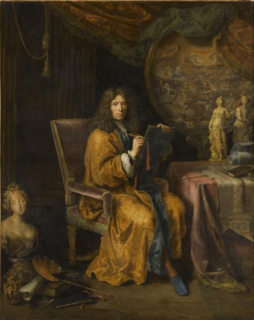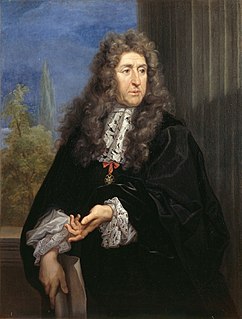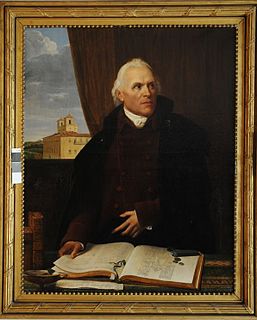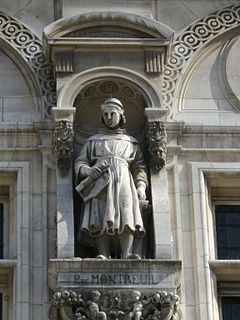
Pierre de Chelles was a French architect from the late 13th and early 14th centuries. He was one of the architects of the Notre-Dame de Paris Cathedral. He completed the choir began in 1300, the high flying buttresses above the apse, and the building of the rood screen. He was also a sculptor.

Notre-Dame de Paris, often referred to simply as Notre-Dame, is a medieval Catholic cathedral on the Île de la Cité in the 4th arrondissement of Paris. The cathedral is consecrated to the Virgin Mary and considered to be one of the finest examples of French Gothic architecture. Its pioneering use of the rib vault and flying buttress, its enormous and colourful rose windows, and the naturalism and abundance of its sculptural decoration set it apart from the earlier Romanesque style. Major components that make Notre Dame stand out include one of the world's largest organs and its immense church bells.
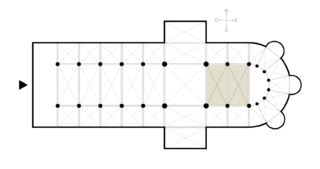
A choir, also sometimes called quire, is the area of a church or cathedral that provides seating for the clergy and church choir. It is in the western part of the chancel, between the nave and the sanctuary, which houses the altar and Church tabernacle. In larger medieval churches it contained choir-stalls, seating aligned with the side of the church, so at right-angles to the seating for the congregation in the nave. Smaller medieval churches may not have a choir in the architectural sense at all, and they are often lacking in churches built by all denominations after the Protestant Reformation, though the Gothic Revival revived them as a distinct feature.

The flying buttress is a specific form of buttress composed of an arch that extends from the upper portion of a wall to a pier of great mass, in order to convey to the ground the lateral forces that push a wall outwards, which are forces that arise from vaulted ceilings of stone and from wind-loading on roofs.
Contents
De Chelles was related to Jean de Chelles, who was his father or uncle.
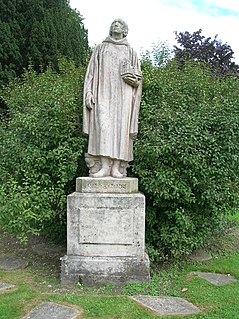
Jeande Chelles was a master mason and sculptor who was one of the architects at the Cathedral of Notre-Dame de Paris. On the exterior wall of the south transept a stone plaque is signed Johanne Magistro and dated February 1257, documenting the initiation of alterations to the transept and its portal. On his death in 1265 he was succeeded by Master Pierre de Montreuil.





